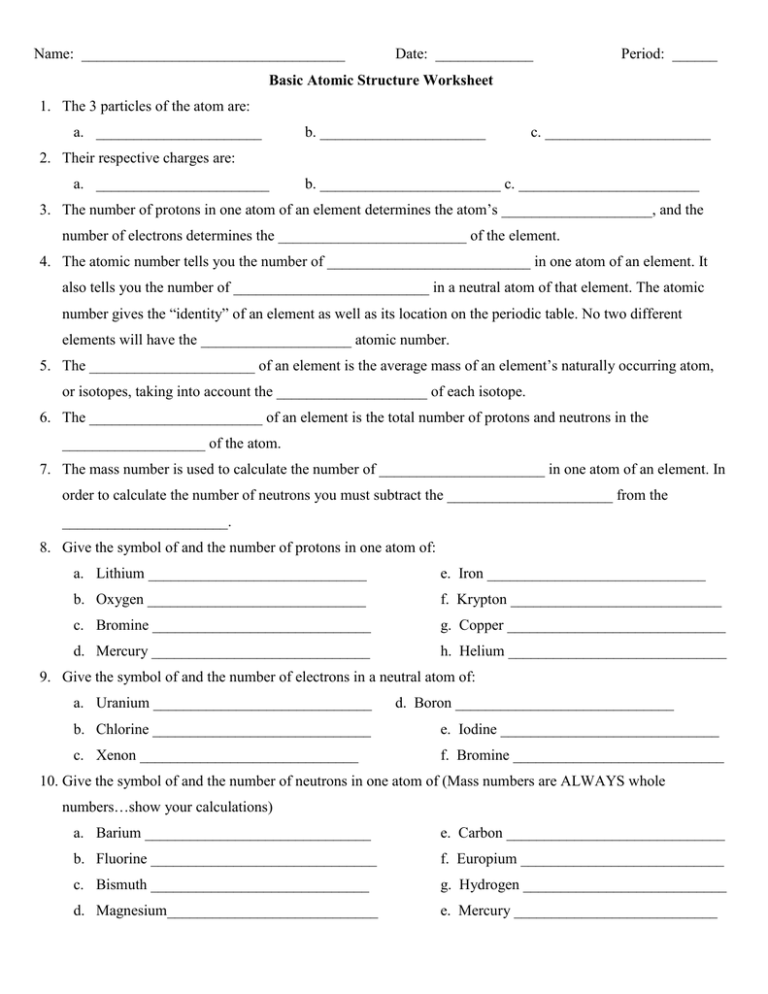
1.1.4 define mass number as the total number of protons and neutrons in an atom. 1.1.3 define atomic number as the number of protons in an atom. 1.1.1 describe the structure of an atom as a central positively charged nucleus containing protons and neutrons (most of the mass) surrounded by orbiting electrons in shells. Unit C1: Structures, Trends, Chemical Reactions, Quantitative Chemistry and Analysis. 1.1.7 calculate the number of protons, neutrons and electrons in an atom or an ion and deduce the charge on an ion or determine the number of subatomic particles given the charge. 1.1.5 define mass number as the total number of protons and neutrons in an atom. 1.1.4 define atomic number as the number of protons in an atom. 1.1.2 describe the structure of an atom as a central positively charged nucleus containing protons and neutrons (most of the mass) surrounded by orbiting electrons in shells. Unit 1: Structures, Trends, Chemical Reactions, Quantitative Chemistry and Analysis. The outcome for each group is externally validated by the teacher. The focus is on the whole group rather than individual understanding with peer mentoring a feature of this activity. 
Initial self assessment is followed by peer questions and judgements. The initial image provides a catalyst for sharing the criteria related to the learning objectives. Confirm that all members of the group can meet the criteria or that further work is necessary.Pose further questions to other students in the group in this way.Ask the question of the appropriate student.Choose a question to test the understanding of some aspect of the topic and choose a number from one to four at random.Number each member of the group one to four.Invite each group of students to ask for teacher confirmation that they can meet the criteria. Use a randomised check: The aim is for all members of the group to be confident that they can all demonstrate that they meet all the criteria.

Try again, to demonstrate their competence.Ask for or give help to other members of the group if they fail to meet criteria.Answer the questions posed by the other pair, to demonstrate to the group that they can meet the criteria.Work in pairs to devise questions for the other two students.Then circulate and support with prompts while students: Ask the teacher if all members of the group are not confident about meeting a particular criterion.Ask for help from another member of the group, if they don’t think they are competent.Tick the first box with each question, if they think they are competent.Assess whether they think they can satisfy each of the ten criteria listed on the sheet.Next, explain to the students how they are to carry out the activity.

Give a ’Criteria’ sheet to each student. Arrange students into groups of four, with a mix of ability in each.
That they will demonstrate that they meet the criteria. How the criteria relate to the learning objectives. Show a photograph of Ernest Rutherford to the students before asking them what he is most famous for. Understand and make use of ideas about the structure of atoms. This resource is best used to consolidate learning at the end of a period of study on this topic. The teacher provides external validation of the group rather than individual achievement. They work together in a group to demonstrate their understanding to other students and to the teacher. This activity enables students to review their ideas about the structure of atoms. RSC Yusuf Hamied Inspirational Science Programme. Introductory maths for higher education. The physics of restoration and conservation.







 0 kommentar(er)
0 kommentar(er)
